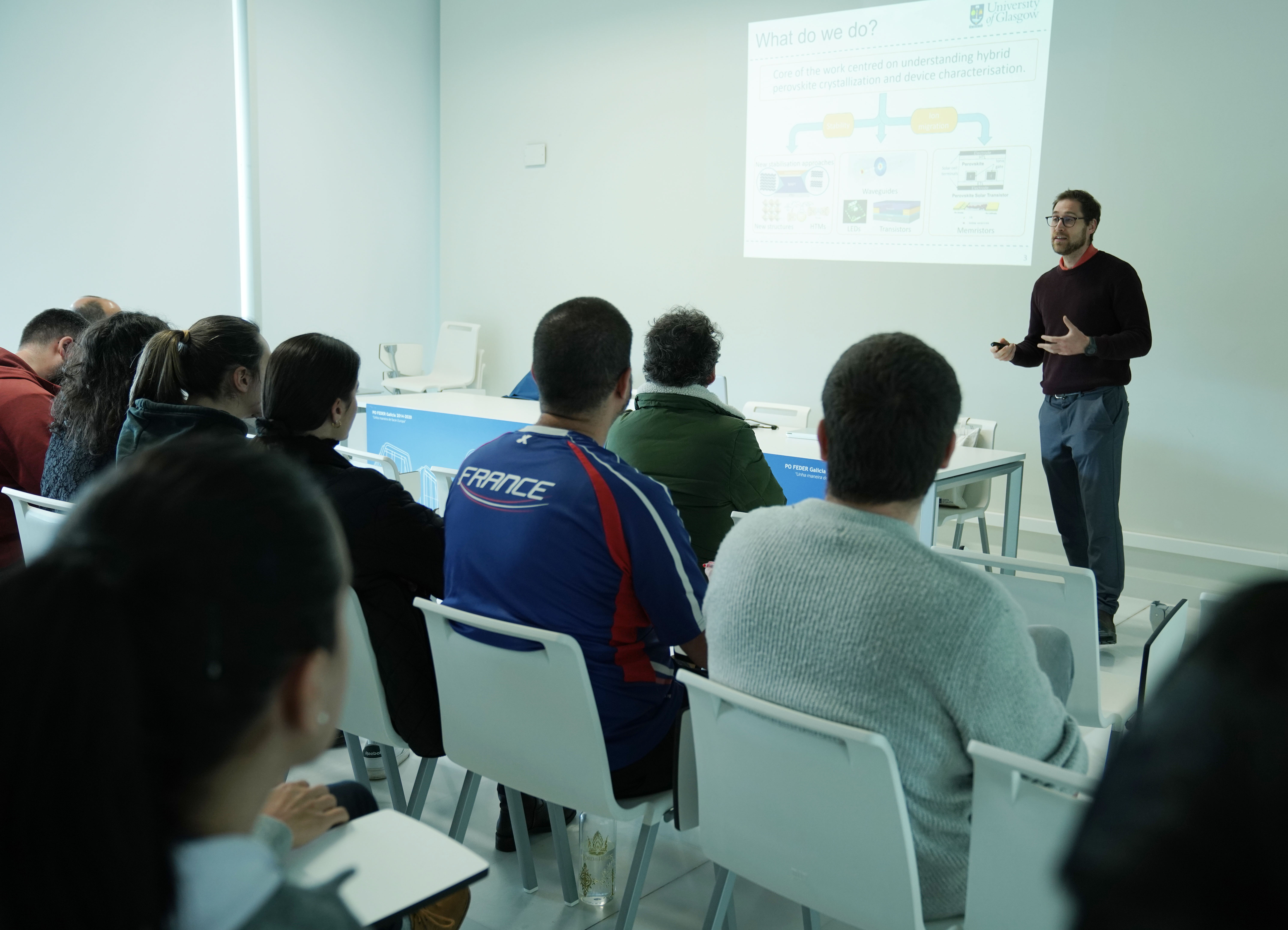Eventos
O xoves 2 de maio de 2024 o Dr. Pablo Docampo (University of Glasgow) ofrecerá o seminario "Hybrid Halide Perovskites: Taking advantage of ion migration and stability", dentro do ciclo "CINBIO Seminar Programme".
Será ás 11:00h na Sala de seminarios de Torre CACTI.

ABSTRACT:
Hybrid halide perovskites combine top-notch optoelectronic properties with solution-deposition, i.e. can be printed. This unprecedented combination has led to the development of solar cells rivalling photovoltaic industry standards, Silicon or CdTe. The road towards these achievements has been marked by a constant improvement of perovskite deposition techniques fuelled by our increasing understanding of the crystallization processes, yet stability is still a challenge. Inevitable defect formation during the fabrication of perovskite films leads to unoccupied organic cation and halide lattice sites, i.e. ionic vacancies. These vacancies are mobile and dominate the electronic response of the device and can catalyse degradation. Particularly, ion accumulation at interfaces blurs interface energetics, giving rise to ‘hysteresis’ and making data interpretation from electronic measurements complicated, hampering progress. In this talk I will introduce a technique we have recently developed to take advantage of the effects of ion migration on charge extraction to determine the built-in voltage in a functioning device -- giving way to a more targeted approach to interfacial optimisation. Furthermore, I will showcase some of our contributions determining degradation mechanisms in these materials systems, how a popular strategy incorporating layered perovskites as a 'hydrophobic' layer, in fact does not keep water out; and alternative approaches to minimise the issue. I will also show that the inherent tunability of perovskite materials makes them amenable to incorporation into a wide variety of different applications, including fibre optics, transistors and LEDs.






